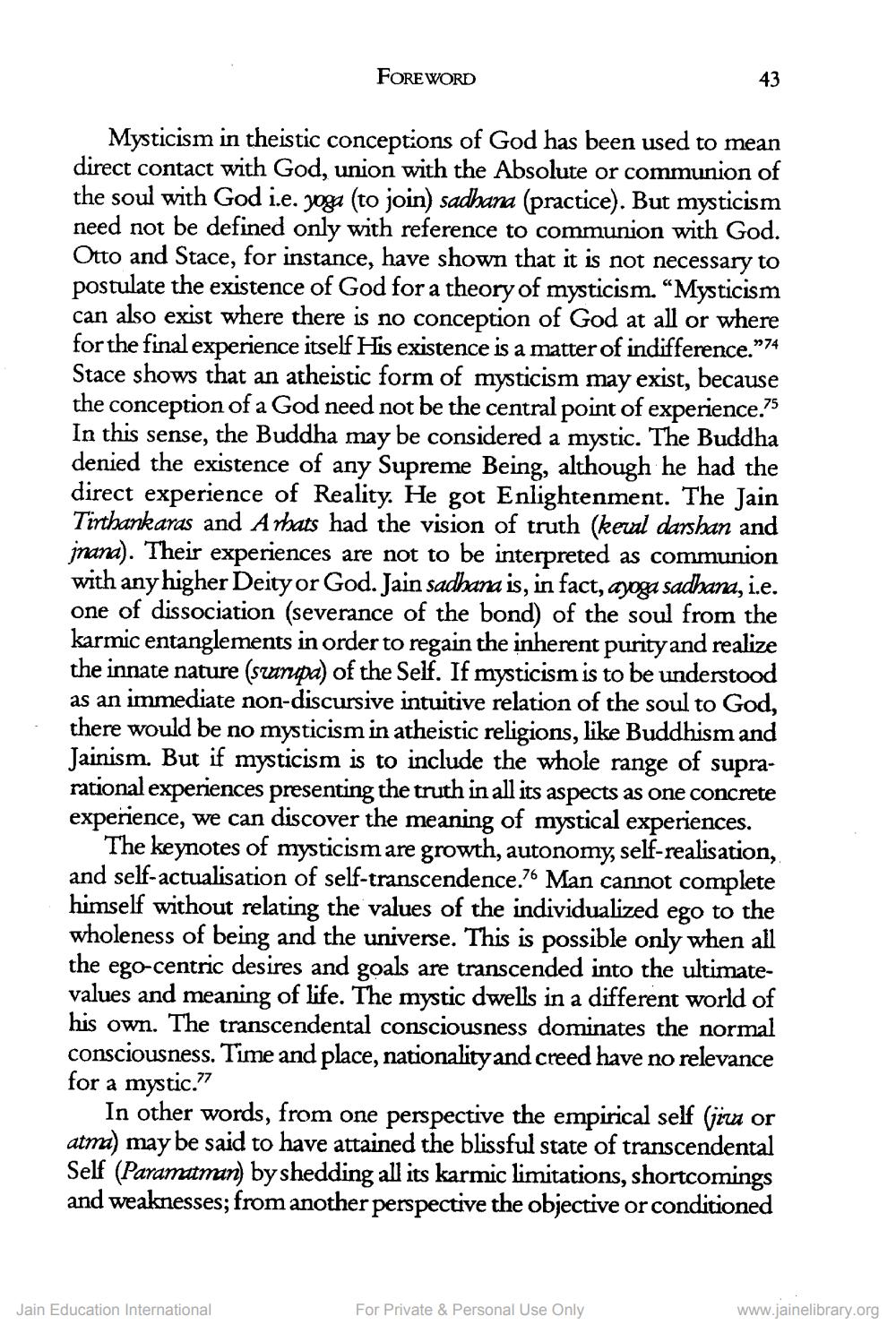________________
FOREWORD
Mysticism in theistic conceptions of God has been used to mean direct contact with God, union with the Absolute or communion of the soul with God i.e. yoga (to join) sadhana (practice). But mysticism need not be defined only with reference to communion with God. Otto and Stace, for instance, have shown that it is not necessary to postulate the existence of God for a theory of mysticism. “Mysticism can also exist where there is no conception of God at all or where for the final experience itself His existence is a matter of indifference."74 Stace shows that an atheistic form of mysticism may exist, because the conception of a God need not be the central point of experience.75 In this sense, the Buddha may be considered a mystic. The Buddha denied the existence of any Supreme Being, although he had the direct experience of Reality. He got Enlightenment. The Jain Tirthankaras and Arhats had the vision of truth (keval darshan and jnana). Their experiences are not to be interpreted as communion with any higher Deity or God. Jain sadhana is, in fact, ayoga sadhana, i.e. one of dissociation (severance of the bond) of the soul from the karmic entanglements in order to regain the inherent purity and realize the innate nature (szarupa) of the Self. If mysticism is to be understood as an immediate non-discursive intuitive relation of the soul to God, there would be no mysticism in atheistic religions, like Buddhism and Jainism. But if mysticism is to include the whole range of suprarational experiences presenting the truth in all its aspects as one concrete experience, we can discover the meaning of mystical experiences.
The keynotes of mysticism are growth, autonomy, self-realisation, and self-actualisation of self-transcendence.76 Man cannot complete himself without relating the values of the individualized ego to the wholeness of being and the universe. This is possible only when all the ego-centric desires and goals are transcended into the ultimatevalues and meaning of life. The mystic dwells in a different world of his own. The transcendental consciousness dominates the normal consciousness. Time and place, nationality and creed have no relevance for a mystic.
In other words, from one perspective the empirical self (jira or atma) may be said to have attained the blissful state of transcendental Self (Paramatman) by shedding all its karmic limitations, shortcomings and weaknesses; from another perspective the objective or conditioned
Jain Education International
For Private & Personal Use Only
www.jainelibrary.org




